What better way to celebrate Arbor Day than by planting a tree in your garden or on a neighborhood street? Trees help mitigate heat-island effects by providing shade for streets and parking areas, add to the value of a property, provide habitat, cool the air and absorb carbon dioxide. Of course, they also provide beauty and can help mark the seasons.
Knowing your site will help you decide if you can plant a small tree, such as a dogwood, redbud or hawthorne, or if your yard can accommodate a large oak, pine or pecan. The function of the tree is also important to consider: Will it be multifunctional by providing screening, shade, noise reduction, cover for wildlife, erosion control or food? Discover below how you can place trees in the landscape to benefit both your home and the environment.
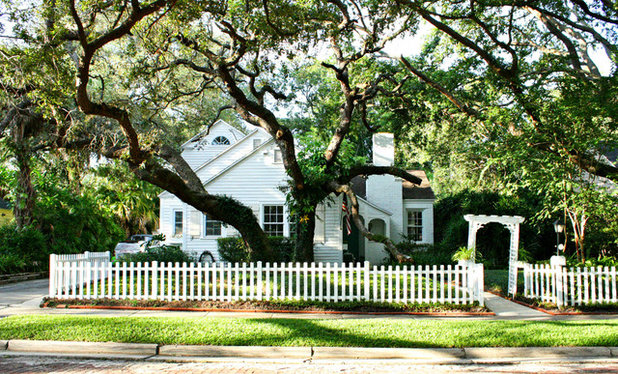
Mina Brinkey
Cool the neighborhood. Consider placing trees where they can shade driveways, sidewalks or other paved areas. According to the U.S. Forest Service Center for Urban Forest Research, neighborhoods with well-shaded streets can be up to 6 to 10 degrees Fahrenheit cooler than neighborhoods without street trees, reducing the heat-island effect and lowering energy needs. Shaded driveways and parking lots keep automobiles cooler, reducing emissions from fuel tanks and engines.
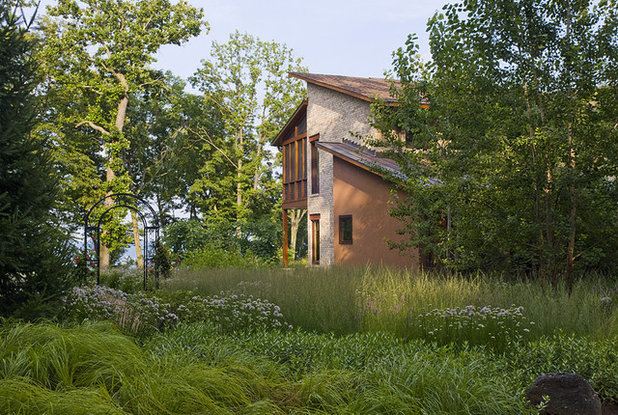
The Garden Consultants, Inc.
Create a habitat. What should you be looking for in a suitable tree to promote wildlife habitat? First and foremost, you should opt for a tree species that is native to your area. It will be well adapted to survive in your particular geographic area according to the climate, soils and rainfall, and will be well suited for native wildlife.
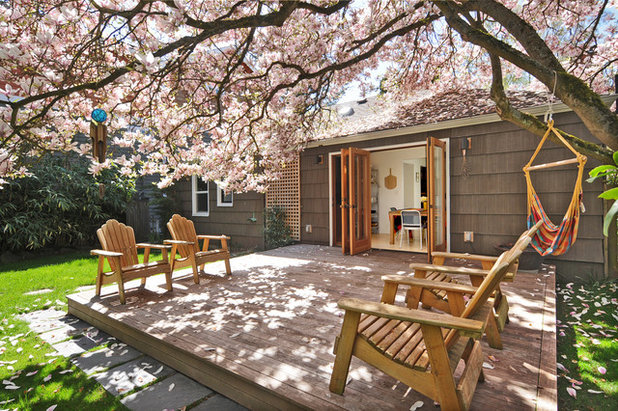
seattlehometours.com
Shade the house. Homeowners can plant shade trees to insulate residential buildings and minimize home heating and cooling costs. Trees can be optimally sited around homes to increase energy efficiency. For instance, in colder climates, you want to take advantage of the sun’s heat during the winter, so plant deciduous trees on the south- and west-facing sides of your home. Homes shaded by trees save 10 to 30 percent in air conditioning costs compared to those without shade.
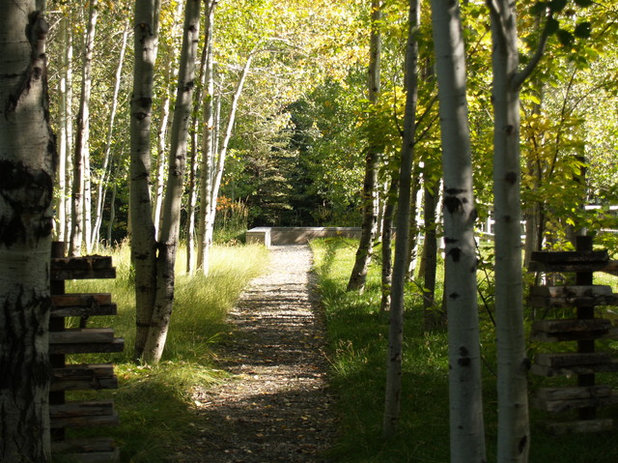
Randy Thueme Design Inc. - Landscape Architecture
Funnel breezes through your property. Plant a row of trees on one side of the house and a wall on the other side of the house, to create a wind tunnel. This will encourage stronger cooling breezes through the property and around the house. You can also plant a grove of trees to act as a low-tech air conditioner for the entire property, creating a cool zone; breezes can then distribute coolness throughout the property and around the house.
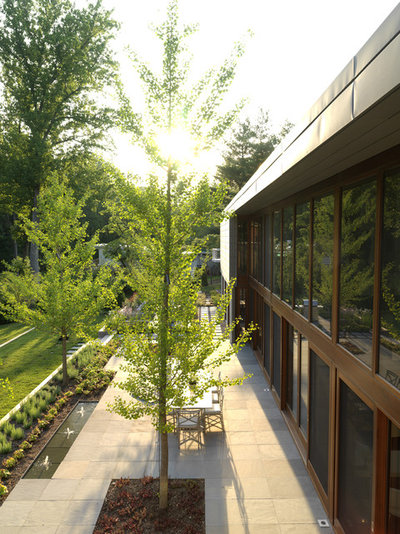
Ziger/Snead Architects
Create leafy curtains. Place trees where they’ll shield your windows from direct sun, especially those on the south and west sides. Deciduous trees allow welcome winter sun to filter through the branches once they’re bare.
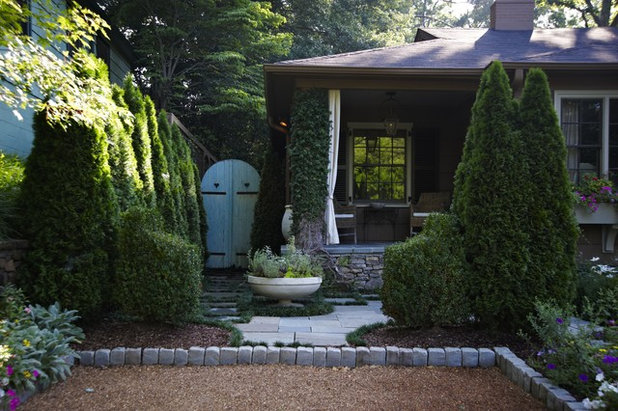
Troy Rhone Garden Design
Block winter winds. In cold climates plant evergreen trees and shrubs to block northwest winter winds. Dense windbreaks can cut wind speed by 85 percent. Keep in mind, however, that in cold-winter areas, you may want the warming rays of the afternoon sun on the west side of your home. Plant a west windbreak far enough away to allow the low, slanting afternoon winter sun to reach the house.
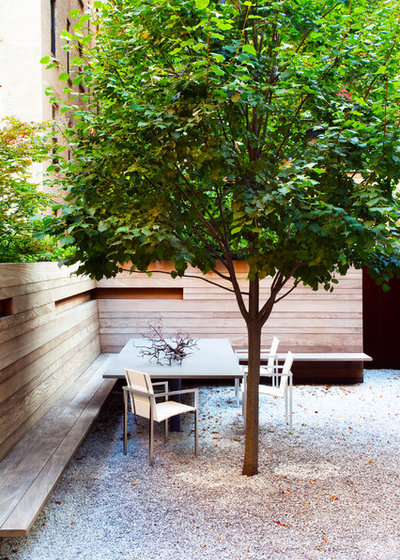
Billinkoff Architecture PLLC
Green up the city. Urban gardens in particular benefit from trees strategically placed for environmental benefits. Take time to study the movement of sun and wind around your house and property during different seasons. You’ll then be better able to control their effects with plantings and structures.
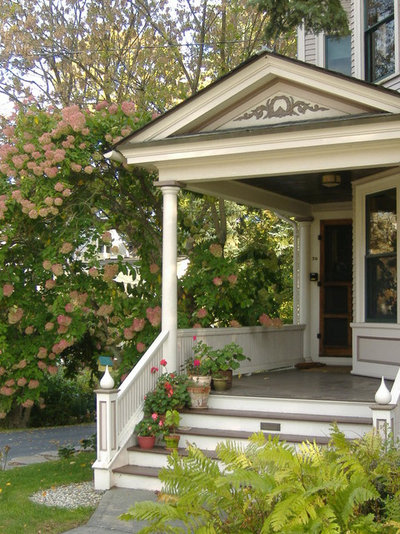
Barron & Jacobs
Promote privacy. Of course, one thing urban gardens often lack is seclusion. When used as a living privacy fence, trees can help filter noise and screen views.
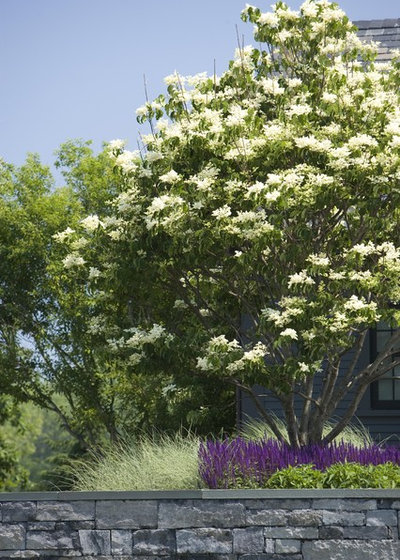
Wagner Hodgson
Think “Right tree, right place.” When siting a tree in your garden, survey for overhead and underground utilities that can be problematic during the planting phase and as the tree reaches its full height and root depth. Also consider the proximity of your house and outbuildings. Avoid planting the tree so close to buildings that it will interfere with the roof or foundation, which would make it a hazard.
Next: More Houzz guides to growing trees





